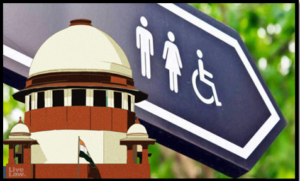GAPS IN ACCESSIBILITY FOR PEOPLE WITH DISABILITIES AT COURTS ACROSS INDIA
Why in the News?
- A report by the Centre for Research and Planning revealed lack of wheelchair availability, deficiencies in ramps, and infrastructure gaps for people with disabilities across court premises in India.
Source: CNN
About Report
- More than half of the District Court complexes lack ramps, hindering accessibility for individuals with mobility issues.
- Only 25.2% of the District Court complexes have wheelchairs available for people with mobility challenges.
- Tactile paving, crucial for assisting individuals with visual impairments in navigating the court building, is found in only1% of the District Courts.
- Accessible toilets for people with disabilities are available in just 4% of the District Court complexes.
- Sign language interpreters, vital for persons with hearing impairments during court proceedings, are present in only 2.8% of the districts in India.
- The report highlights an infrastructure gap, with 4,250 courtrooms needed out of a sanctioned strength of 25,081 judges in District Judiciary.
- Ownership of court premises varies, with5% owned by the judiciary, 13.3% by state governments, 2.6% being rented premises, and 10.6% under construction.
- In some regions, courts operate from private rented or temporary accommodations, posing challenges for necessary amenities and a secure work environment.
- Alterations in old or temporary court buildings are difficult due to structural limitations and space constraints, further exacerbating accessibility issues.
- The report calls for regular inspections by relevant agencies to explore modifications in existing court buildings and improve accessibility for people with disabilities.

 Source: CNN
Source: CNN

